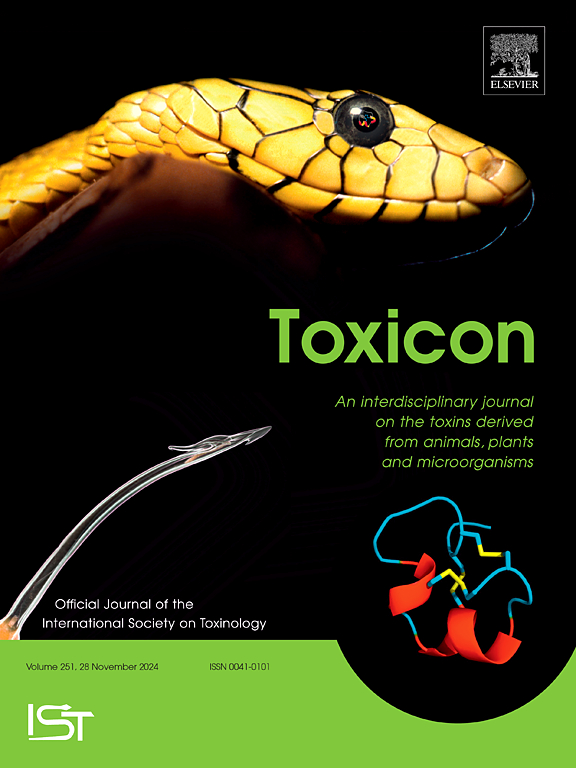BoNT/Action beyond neurons
IF 2.6
4区 医学
Q2 PHARMACOLOGY & PHARMACY
引用次数: 0
Abstract
Botulinum neurotoxin type A (BoNT/A) has expanded its therapeutic uses beyond neuromuscular disorders to include treatments for various pain syndromes and neurological conditions. Originally recognized for blocking acetylcholine release at neuromuscular junctions, BoNT/A's effects extend to both peripheral and central nervous systems. Its ability to undergo retrograde transport allows BoNT/A to modulate synaptic transmission and reduce pain centrally, influencing neurotransmitter systems beyond muscle control.
BoNT/A also interacts with glial cells, such as Schwann cells, satellite glial cells, astrocytes, microglia, and oligodendrocytes. Schwann cells, key to peripheral nerve regeneration, are directly influenced by BoNT/A, which promotes their proliferation and enhances remyelination. Satellite glial cells, involved in sensory neuron regulation, show reduced glutamate release in response to BoNT/A, aiding in pain relief.
In the CNS, BoNT/A modulates astrocyte activity, reducing excitotoxicity and inflammation, which is relevant in conditions like epilepsy. Microglia, the CNS's immune cells, shift from a pro-inflammatory to a neuroprotective state when treated with BoNT/A, enhancing tissue repair. Additionally, BoNT/A promotes oligodendrocyte survival and remyelination, especially after spinal cord injury.
Overall, BoNT/A's ability to target both neurons and glial cells presents a multifaceted therapeutic strategy for neurological disorders, pain management, and CNS repair. Further research is necessary to fully elucidate its mechanisms and optimize its clinical application.

BoNT/动作超越神经元。
A型肉毒杆菌神经毒素(BoNT/A)已将其治疗用途扩展到神经肌肉疾病之外,包括治疗各种疼痛综合征和神经系统疾病。BoNT/A最初被认为是阻断神经肌肉连接处的乙酰胆碱释放,其作用扩展到周围和中枢神经系统。BoNT/A的逆行转运能力使其能够调节突触传递,集中减轻疼痛,影响肌肉控制之外的神经递质系统。BoNT/A也与神经胶质细胞相互作用,如雪旺细胞、卫星神经胶质细胞、星形胶质细胞、小胶质细胞和少突胶质细胞。BoNT/A直接影响周围神经再生的关键细胞雪旺细胞,促进其增殖,促进髓鞘再生。卫星神经胶质细胞,参与感觉神经元的调节,显示减少谷氨酸释放响应BoNT/A,有助于缓解疼痛。在中枢神经系统中,BoNT/A调节星形胶质细胞的活性,减少兴奋性毒性和炎症,这与癫痫等疾病有关。小胶质细胞,中枢神经系统的免疫细胞,在接受BoNT/ a治疗后,从促炎状态转变为神经保护状态,增强组织修复。此外,BoNT/A促进少突胶质细胞存活和髓鞘再生,特别是在脊髓损伤后。总的来说,BoNT/A靶向神经元和神经胶质细胞的能力为神经系统疾病、疼痛管理和中枢神经系统修复提供了多方面的治疗策略。为充分阐明其作用机制,优化其临床应用,有必要进一步研究。
本文章由计算机程序翻译,如有差异,请以英文原文为准。
求助全文
约1分钟内获得全文
求助全文
来源期刊

Toxicon
医学-毒理学
CiteScore
4.80
自引率
10.70%
发文量
358
审稿时长
68 days
期刊介绍:
Toxicon has an open access mirror Toxicon: X, sharing the same aims and scope, editorial team, submission system and rigorous peer review. An introductory offer Toxicon: X - full waiver of the Open Access fee.
Toxicon''s "aims and scope" are to publish:
-articles containing the results of original research on problems related to toxins derived from animals, plants and microorganisms
-papers on novel findings related to the chemical, pharmacological, toxicological, and immunological properties of natural toxins
-molecular biological studies of toxins and other genes from poisonous and venomous organisms that advance understanding of the role or function of toxins
-clinical observations on poisoning and envenoming where a new therapeutic principle has been proposed or a decidedly superior clinical result has been obtained.
-material on the use of toxins as tools in studying biological processes and material on subjects related to venom and antivenom problems.
-articles on the translational application of toxins, for example as drugs and insecticides
-epidemiological studies on envenoming or poisoning, so long as they highlight a previously unrecognised medical problem or provide insight into the prevention or medical treatment of envenoming or poisoning. Retrospective surveys of hospital records, especially those lacking species identification, will not be considered for publication. Properly designed prospective community-based surveys are strongly encouraged.
-articles describing well-known activities of venoms, such as antibacterial, anticancer, and analgesic activities of arachnid venoms, without any attempt to define the mechanism of action or purify the active component, will not be considered for publication in Toxicon.
-review articles on problems related to toxinology.
To encourage the exchange of ideas, sections of the journal may be devoted to Short Communications, Letters to the Editor and activities of the affiliated societies.
 求助内容:
求助内容: 应助结果提醒方式:
应助结果提醒方式:


